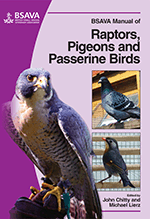
Full text loading...

The word ‘raptor’ is an ancient one. It is Latin for a bird with a hooked beak and sharp claws and is perpetuated in (for example) the French rapace and Italian rapaci. In theory, the term could embrace a range of different species, but in practice it is normally used for birds of prey of the Orders Falconiformes and Strigiformes. This chapter explains terminology, biology and natural history.
Introduction, Page 1 of 1
< Previous page | Next page > /docserver/preview/fulltext/10.22233/9781910443101/9781910443101.1-1.gif

Full text loading...



